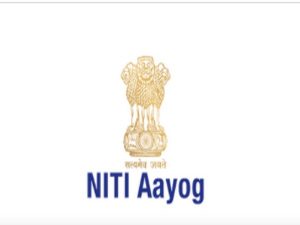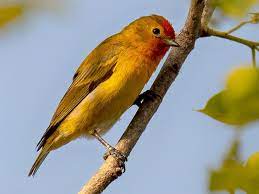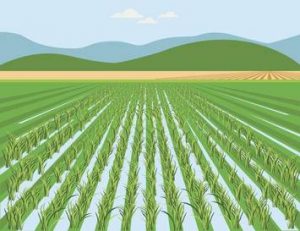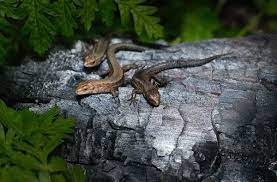Today’s Current Affairs: 14th Feb 2024 for UPSC IAS exams, State PSC exams, SSC CGL, State SSC, RRB, Railways, Banking Exam & IBPS, etc
Table of Contents
GROW Portal:

The GROW report and portal was launched by a Member of NITI Aayog.
- The “Greening and Restoration of Wasteland with Agroforestry (GROW)-Suitability Mapping” portal allows universal access to state and district-level data.
- It is hosted on the Bhuvan website.
- The GROW initiative aligns with national commitments, aiming to restore 26 million hectares of degraded land by 2030 and create an additional carbon sink of 2.5 to 3 billion tonnes of carbon dioxide equivalent.
- The initiative, led by NITI Aayog, involved a collaborative effort from multiple institutions and employed advanced technologies such as remote sensing and GIS to assess agroforestry suitability across all districts in India.
- Utilising thematic datasets, the project resulted in the creation of an Agroforestry Suitability Index (ASI). This index enables national-level prioritisation for greening and restoration projects.
- This project on prioritisation of wasteland areas suitable for greening is based on the analysis of five remote sensing derived thematic layers land use, wasteland, slope, water proximity and soil organic content.
- These parameters were selected as a result of expert consultations and considered to be the most critical layers in identifying areas that are amenable to interventions with agroforestry. Highest weightage was given to wastelands.
- The developed system provides information on areas suitable for agroforestry across India.
- The areas available in the system are classified as highly suitable, moderately suitable, and less suitable for agroforestry.
Fire-Capped Tit:

Birders have spotted the trail of species flying back home including the fire-capped tit in the Aravalli hill region suggesting reverse migration as the season changes from winter to summer
- Fire Capped Tit is a small bird species assigned to the family Paridae.
- It is a Himalayan bird which flies down south towards Western Ghats and Kerala around Sept, and is back around Feb-end and March.
- Inhabits forest feeding on invertebrates, nectar and pollen, usually high in the canopy but will descend to low growth.
- It is found in montane broadleaf forests at middle to high elevations, sometimes mixed in with other species.
- These birds breed in the Himalayas during summer and have a melodious song.
- A local breeding summer visitor to northern mountains from Pakistan east to Arunachal Pradesh.
- Winters in foothills and rarely in plains south to Maharashtra and Madhya Pradesh.
- Conservation status
- IUCN: Least Concern
Gupteswar Forest : Biodiversity Heritage Site

The Odisha government declared the Gupteswar forest in Koraput district as its fourth Biodiversity Heritage Site (BHS).
- Biodiversity Heritage Site are areas that are unique, ecologically fragile ecosystems having rich biodiversity comprising of any one or more of the components such as;
- species richness, high endemism, presence of rare, endemic and threatened species, keystone species, species of evolutionary significance, wild ancestors of domestic/cultivated species or landraces or their varieties, past pre-eminence of biological components represented by fossil beds and having cultural or aesthetic values.
- Under the Biological Diversity Act, the State Governments are empowered to notify in the official gazette, in consultation with ‘local bodies’, areas of biodiversity importance as Biodiversity Heritage Sites.
- Also, the State Government in consultation with the Central Government may frame rules for the management and conservation of BHS.
- The State Governments are empowered to frame schemes for compensating or rehabilitating any person or section of people economically affected by such notification.
Three Initiatives Aimed At Bolstering Crop Insurance And Supporting Farmers In India:

The Agriculture Minister recently launched three initiatives aimed at bolstering crop insurance and supporting farmers in India.
- The initiatives include the Kisan Rakshak Helpline 14447 and Portal, the Agri-Insurance Sandbox Framework Platform SARTHI, and a Learning Management System (LMS) Platform.
- SARTHI Developed in collaboration with UNDP India Provides a comprehensive suite of insurance products tailored for farmers and rural India Simplifies the insurance process Offers digital payment options
- Krishi Rakshak Portal and Helpline (KRPH) 14447 Aims to address farmers’ grievances transparently – Provides real-time assistance
- LMS Platform Facilitates training and knowledge-sharing for stakeholders implementing agricultural schemes like PMFBY, MIIIS, and KCC
- These initiatives aim to empower farmers technically and digitally, aligning with the government’s vision to transform India’s agriculture sector.
Kilkari Program And Mobile Academy:

The Central Government launched the Kilkari program and Mobile Academy in Maharashtra and Gujarat.
- Kilkari offers weekly IVRS-based audio messages on reproductive, maternal, neonatal, and child health care (RMNCH).
- Mobile Academy provides free audio training to ASHAs to enhance their knowledge and communication skills via mobile phones.
- The initiative aims to strengthen public health infrastructure and provide citizen-centric health services leveraging mobile technology.
- Kilkari’ is an IVR-based mobile health service delivering free, weekly audio messages about pregnancy, childbirth, and childcare directly to families’ mobile phones.
- It operates from the second trimester of pregnancy until the child is one year old.
- Features include pre-recorded messages in the voice of a fictitious doctor character named Dr. Anita, centralized hosting by the Ministry of Health and Family Welfare, integration with the Reproductive Child Health portal, and availability in 18 states/UTs.
Sada Tanseeq : Maiden Joint Military Exercise

The maiden joint military exercise ‘Sada Tanseeq’ between the Indian Army and the Royal Saudi Land Force concluded at Mahajan Field Firing Ranges.
- It was a 12-day joint exercise that aimed to achieve interoperability between the two forces and acquaint each other with operational procedures and combat drills under United Nations (UN) mandate.
- Both the contingents jointly took part in the validation phase which included creation of Temporary Operating Base, establishing an intelligence, surveillance and reconnaissance grid and establishing mobile vehicle check post
Brumation : Reptilian Survival Strategy

Researchers have observed instances of brumation in various reptilian species across habitats.
- Brumation is the name to describe a period of dormancy or slowed activity in reptiles, much like hibernation in mammals.
- It typically occurs during colder months, when temperatures drop and food becomes scarce.
- During brumation, reptiles may retreat to underground burrows, rock crevices or other sheltered areas where temperatures are relatively more stable.
- Their metabolism slows significantly, allowing them to go weeks or even months without eating.
- This period of reduced activity allows reptiles to conserve energy and minimise their resource requirements.
- Such species include box turtles and painted turtles, which burrow into the mud at the bottom of ponds or lakes.
- Snakes may seek refuge in underground dens or caves while lizards may hide under rocks or within vegetation.
High Altitude Pseudo-Satellite (HAPS):

The Council of Scientific and Industrial Research (CSIR) – National Aerospace Laboratories (NAL) recently conducted successful tests on a High Altitude Pseudo-Satellite (HAPS), marking a significant milestone in unmanned aerial vehicle (UAV) technology.
- High Altitude Pseudo-Satellite (HAPS) is a solar-powered UAV. It can generate solar energy and remain in the air for months or years.
- HAPS operates in the stratosphere (which extends from 6-50 km above the earth’s surface), flying at altitudes of 18-20 km, nearly double the heights of commercial aeroplanes.
- This altitude allows them to provide surveillance capabilities akin to satellites.
- HAPS is designed for persistent surveillance, communications, and specialist science missions.
- HAPS is a still-developing technology, and the successful test flight puts India among a very small group of countries currently experimenting with this technology.
- HAPS can be deployed in disaster situations and provide mobile communication networks (5G waves) in remote areas, if the normal networks get damaged due to any calamity.
- They can double up as “towers in the sky” and have more flexibility than satellites, in being able to map a piece of land from above.
Water (Prevention and Control of Pollution) Amendment Bill, 2024:

The two houses of the Parliament recently approved the Water (Prevention and Control of Pollution) Amendment Bill, 2024.
Major Provisions of the Water (Prevention and Control of Pollution) Amendment Bill, 2024:
- The Water (Prevention and Control of Pollution) Act, 1974, has long been a cornerstone of India’s environmental legislation to ensure sustainable management of water resources.
- The recent amendment seeks to address certain shortcomings and adapt regulatory frameworks to contemporary needs.
- Amendments in the Water Act are also necessary to make in line with the Air Act, as both laws contain similar provisions
Major Amended Provisions:
- It focuses on decriminalising minor offences related to water pollution, alleviating fears of imprisonment for technical or procedural lapses.
- The rationale is to ensure penalties align with the severity of offences, promoting compliance without overly burdening stakeholders.
- The amended bill empowers the central government to exempt specific categories of industrial plants from certain statutory restrictions, such as those outlined in Section 25 regarding the establishment of new outlets and discharges.
- This provision intends to streamline regulatory processes and reduce duplication of surveillance efforts, and alleviate unnecessary burdens on regulatory agencies, promoting efficiency.
- It introduces measures to enhance regulatory oversight and standardisation across states.
- It grants the central government authority to prescribe guidelines for the nomination of chairpersons of State Pollution Control Boards and issue directives regarding the grant, refusal, or cancellation of industry-related consents.
- It provides certain mandatory qualifications, experience, and procedures to ensure fair appointment of chairpersons.
Retail Inflation:

India’s retail inflation eased to a three-month low of 5.1% recently.
- Retail inflation, also known as Consumer Price Index (CPI)inflation, tracks the change in retail prices of goods and services which households purchase for their daily consumption.
- CPI is calculated for a fixed basket of goods and services that may or may not be altered by the government from time to time.
- The change in the price index over a period of time is referred to as CPI-based inflation or retail inflation.
- CPI is calculated as a percentage.
- It is a comparison of the general price level in the markets in a particular time period from a time frame in the past.
- This is known as the base year.
Bor Tiger Reserve:

The Bor Tiger Reserve (BTR) recently sought Rs 1 crore for various works to start wildlife safaris in the Bangdapur and Hingni forest ranges.
- Bor Tiger Reserve is a wildlife sanctuary which was declared a tiger reserve in July 2014.
- It is located in the Wardha District of Maharashtra.
- It is the smallest tiger reserve in India by area.
- The reserve covers an area of 138.12 sq. km, which includes the drainage basin of the Bor Dam.
- It is centrally located among several other Bengal Tiger habitats.
- Towards the northeast lies the Pench Tiger Reserve, towards the east is Nagzira Navegaon Tiger Reserve, and to the southeast is Karhandla Wildlife Sanctuary.
- The Tadoba Andhari Tiger Reserve is located to the southeast, Melghat Tiger Reserve stands to the west; Satpura Tiger Reserve lies to the north-west.
Great Backyard Bird Count:

In a remarkable display of citizen science and enthusiasm for birdwatching, India emerged as a key participant in the annual Great Backyard Bird Count (GBBC).
- Great Backyard Bird Count (GBBC) is an annual, four-day event that engages bird enthusiasts of all ages around the world in counting birds to create a real-time snapshot of where the birds are.
- It was launched in 1998 by the Cornell Lab of Ornithology and the National Audubon Society.
- It was established to help researchers learn more about how birds are doing and how to protect them and the environment.
- Participants count birds for as little as 15 minutes (or as long as they wish) on one or more days of the four-day event and report their sightings online.
- Anyone can take part in the Great Backyard Bird Count, from beginner bird watchers to experts. One can participate from his/her backyard, or anywhere in the world.
- Each checklist submitted during the GBBC helps researchers at the Cornell Lab of Ornithology and the National Audubon Society learn more about how birds are distributed across the country and how they are affected by changes in habitat and weather.




